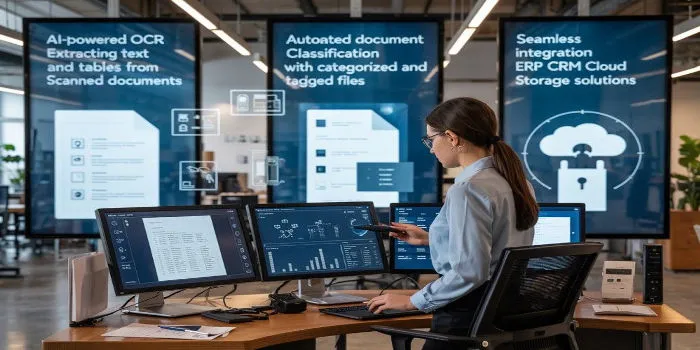20-22 Wenlock Road, LONDON, N1 7GU
20-22 Wenlock Road, LONDON, N1 7GU

Businesses generate and manage vast numbers of documents daily, making manual handling time-consuming and error-prone. Document processing software streamlines workflows, enhances accuracy, and boosts productivity through automation and intelligent data extraction.
But with so many options available, how do you choose the right software? In this article, we will explore key features to consider when selecting the best document-processing software for your business.
Document processing software plays a crucial role in automating document workflows. Businesses in various industries, including finance, healthcare, and legal services, use these tools to:
By using the right software, organizations can save time and resources while ensuring that their data remains accurate and easily accessible.
When selecting a document processing solution, it is essential to evaluate its capabilities. Below are the must-have features that will help you make an informed decision.
One key function of document processing software is automated data extraction, which captures text, numbers, and key details without manual input. Choose software that provides:
Modern document processing software uses machine learning and artificial intelligence to enhance accuracy and efficiency. AI-powered tools can:
Your document processing software should seamlessly integrate with your existing business applications, such as:
Handling sensitive documents requires strong security measures. Ensure the software provides:
A good document processing system should automatically categorize and tag documents based on their content. Features to look for include:
As your business grows, your document processing needs will increase. Choose a scalable solution that supports:
Among the many options available, Caelum AI stands out with its advanced AI and machine learning, delivering accurate OCR, seamless integration, robust security, automated classification, and scalable processing. It helps businesses streamline workflows, cut costs, and enhance data accuracy effortlessly.
Choosing the right document processing software requires careful consideration of your business needs. Look for solutions that offer automated data extraction, AI capabilities, security compliance, and integration with existing tools.
With the right software, businesses can improve efficiency, reduce costs, and enhance document management.
Automated data extraction is a feature that allows software to extract key information from documents without manual input, using OCR and AI technologies.
AI-powered software can recognize patterns, classify documents, and improve data accuracy through machine learning algorithms.
Yes, some advanced OCR tools can recognize and extract handwritten text, although accuracy depends on handwriting clarity.
Industries such as finance, healthcare, law, and logistics benefit greatly from automated document processing.
Consider factors like automated data extraction, AI capabilities, security, integration, and scalability to find the best fit for your needs.